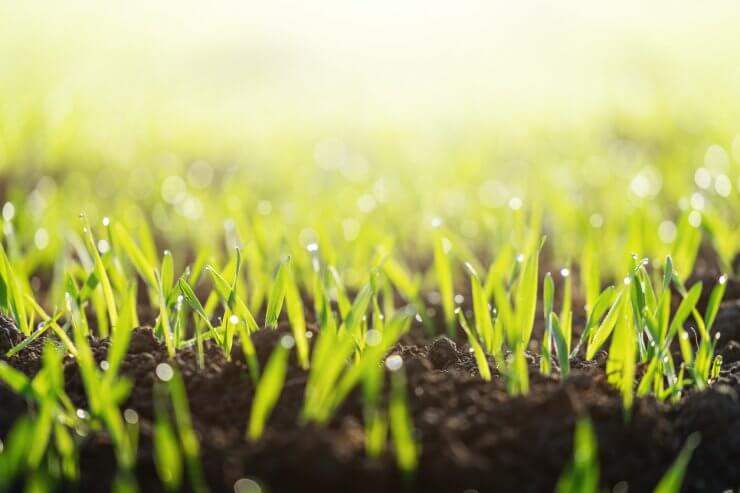
Wheat seedlings
Wheat requires full sun to thrive—a minimum of six hours of direct sunlight and eight or more is better. Your soil should be fairly neutral, about 6.0 to 7.0 pH and have a healthy amount of nitrogen and phosphorus. A soil test is your best bet for making sure you have the right pH and nutrients.
If not, amend your soil to the correct levels, and work 2 to 3 inches of compost into the soil before planting to add nutrients, improve drainage, and increase microbial activity, all of which benefit your plants. You can also use a general all-purpose slow-release fertilizer, preferably a 10-10-10 variety.
There are also some other considerations you need to make when choosing a site for your plants. The right site will help lower disease and insect pest attacks.
Choose a spot away from trees and buildings that cast shade for more than a few hours a day. Also, plant beyond the root zone of large trees—roughly the same size as the tree canopy—to make sure your wheat doesn’t have to compete for water and nutrients.
Providing your wheat with the right nutrition encourages “tillering,” a process that happens within the wheat berry causing more than one stem to grow from the wheat stalk. More tillers equals more wheat heads, resulting in more grain yield.
Your planting spot should also include loamy to part-clay, well-drained soil that doesn’t accumulate standing water after a rainstorm. In addition, higher ground minimizes frost damage and increases air circulation, which allows wheat to dry out faster and reduces the prevalence of some diseases.
Wheat can be planted near just about any other crop without negative effects, but if you’re looking for a plant that enhances wheat, plant legumes such as peas, close by. The legumes provide nitrogen and protein to the wheat and the wheat offers cover to the legumes.
Be sure to thoroughly weed your new wheat field ahead of planting, and keep it weed-free throughout the growing season, so that weeds won’t compete with the wheat roots for water and nutrients.
How and where do you plant your wheat? Please tell us about your successes and what made it work.


 Previous
Previous

